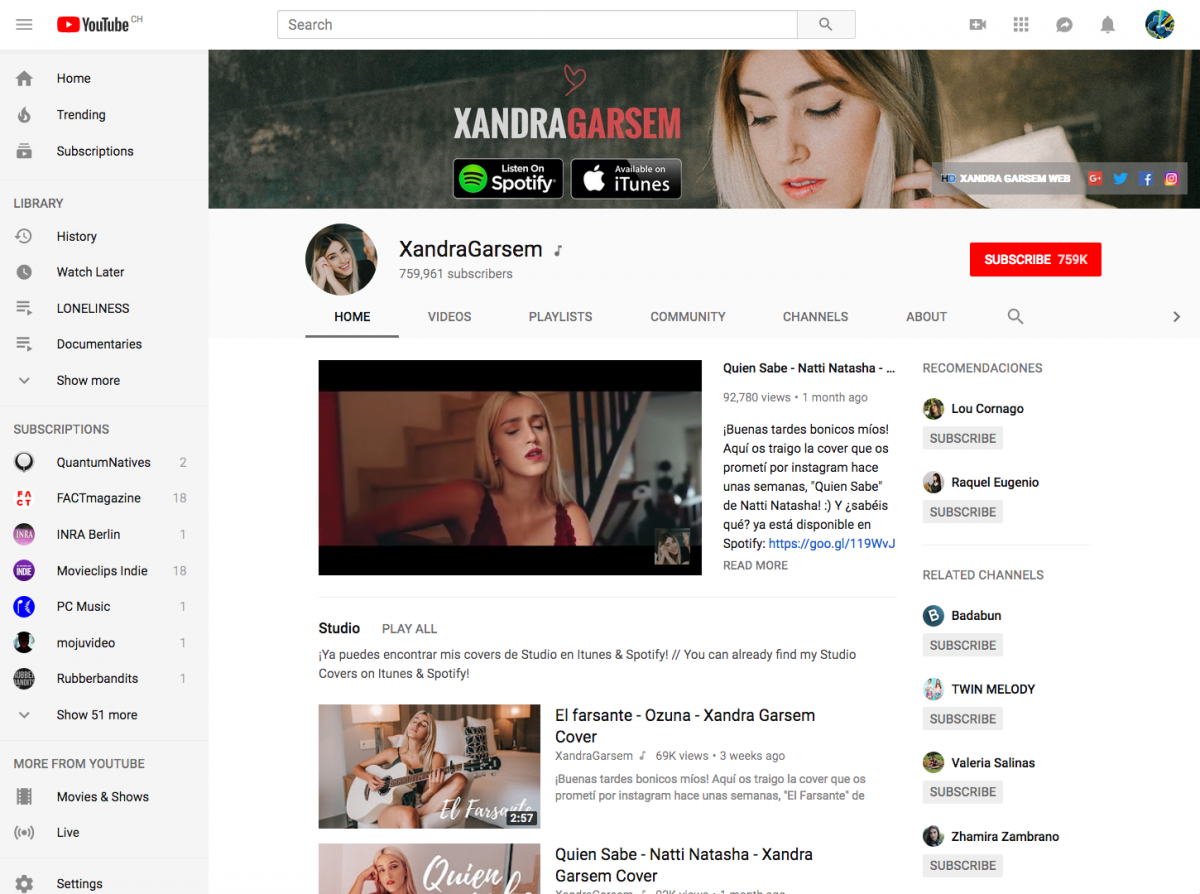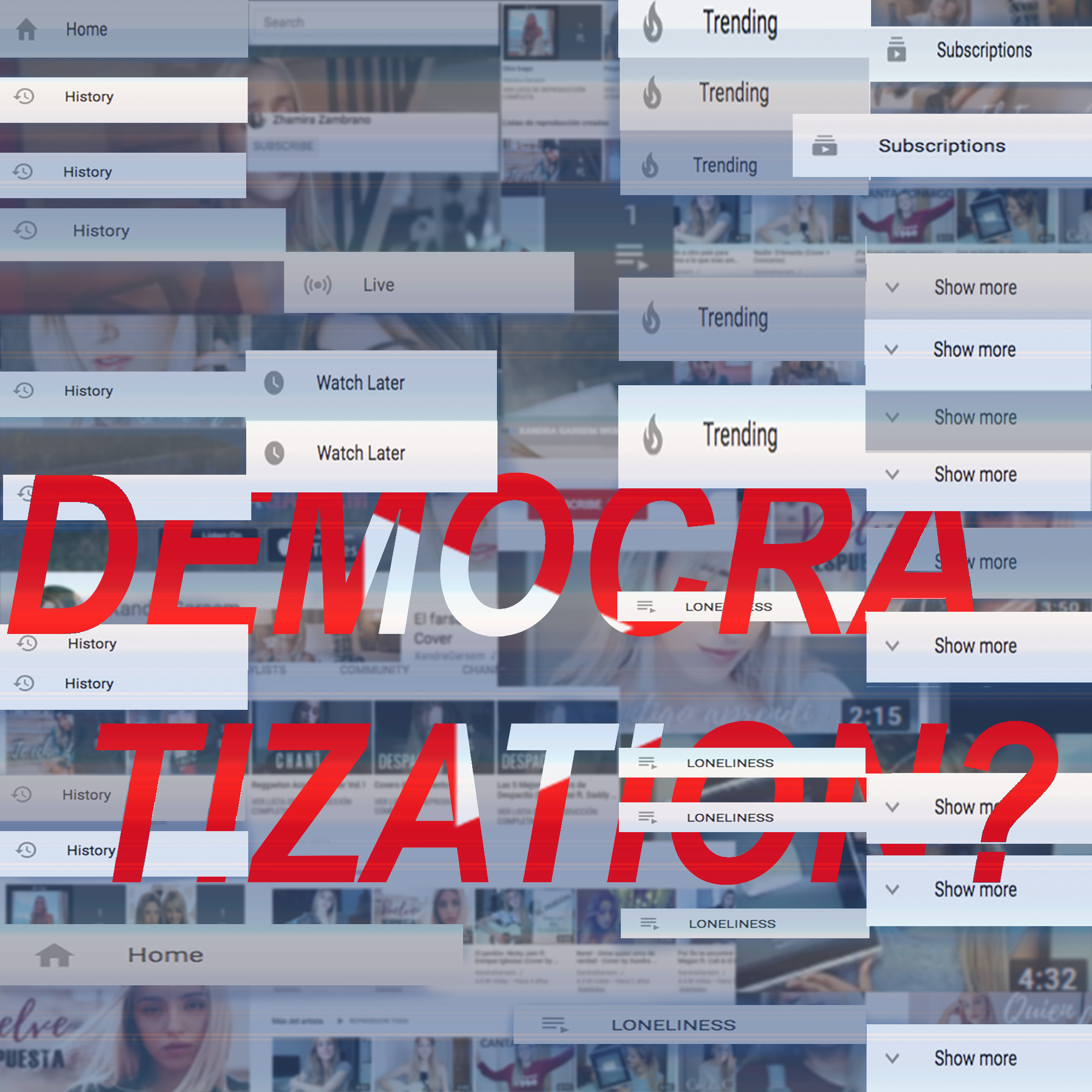
From Democratic to Corporate
The ways in which music videos generate money have changed fundamentally since the days of MTV. The rise of YouTube came along with the hope for democratization, but in a context of media convergence this hope has been diluted due to corporatization of the platform. This could pose a threat to cultural diversity. From the Norient book Seismographic Sounds (see and order here).
Only one video out of the top thirty most-viewed YouTube videos is not a music video, thereby confirming music’s fundamental importance to online video culture and popular entertainment. We enjoy watching music videos because they help us to construct our identity and they provide visual pleasure that helps us to interpret the world around us. Moreover, music videos also have been used to make money in a variety of ways from television to the Internet era. In that case, we will see how clips have been monetized in this period of time.
During the MTV era, revenue generated by music videos was primarily reserved for the major labels (which saw increases in record sales), television channels (whose audiences represented advertising revenue), and commercial brands (for whom music videos provided excellent platforms on which to advertise their products). Since the music business essentially depended on record sales, multinationals invested large sums of money in producing music videos that functioned as advertisements for bands. Music videos then represented an indirect source of revenue for record companies, as they did not control the advertising revenue the videos generated. Through YouTube, in contrast, music videos exist independently of television channels and, consequently, multinationals, independent record labels and musicians without a recording contract have opened their own channels on YouTube in order to obtain direct profits through online advertisements inserted in their videos, such as banners, commercials and displays.
The Democratic Face of YouTube
The emancipation of music videos from MTV represented a hope for democratization. In the MTV era, unknown bands and minority music genres encountered great difficulty in getting their music videos shown on television. By contrast, YouTube has marked a turning point in the evolution of the music video because it has initiated a process of democratization in the creation and dissemination of videos clips. A paradigmatic example is the independent rock band OK Go and their music video «Here It Goes Again». This homemade and creative video won the Grammy Award in 2007 and also put an unknown band on the music charts in various countries. OK Go showed that musicians no longer depended on record labels or TV networks to disseminate their music.
OK Go may illustrate the democratic face of YouTube, but if we review the list of the top one hundred most-viewed videos on YouTube, compiled by researcher Jon E. Illescas in February 2015, we can see that none of these videos belongs to independent musicians. Therefore, a greater proportion of YouTube viewers are watching material from the major labels. One example is Vevo, a video hosting service aimed at monetizing its artists’ music videos. Vevo is owned by Google, Abu Dhabi Media, Sony Music and Universal Music. According to Social Blade, Vevo is the most-viewed channel on YouTube, with over ten billion views. This multi-channel network exclusively hosts its own artists’ channels. Other musicians can neither access Vevo nor benefit from the advantages the channel offers such as audience traffic, which translates into advertising revenue, or the network’s own promotional strategies. Although YouTube has indeed represented a process of democratization for unknown musicians, the fact remains that the most-viewed channels still belong to a multinational conglomerate. This process of the corporatization of YouTube also affects musicians without a recording contract.
Increasing Corporatization
Unknown bands have two ways to make money on YouTube. On the one hand, any musician can open a channel and obtain advertising revenue through Google AdSense, an application that allows owners to monetize their channel. In this case, there is a direct relationship between the musician and YouTube. On the other hand, groups can seek a partner to act as an intermediary with YouTube. The partner's responsibility is to promote and optimize the channel in exchange for a percentage of the revenue generated from the videos. One of YouTube’s most important partners is Fullscreen, an American network owned by a multinational company. Fullscreen retains thirty percent of the revenue generated by musicians’ YouTube channels via AdSense, direct agreements with YouTube or other advertisers. Fullscreen is similar to Vevo, but is aimed at musicians without a recording contract. Since the partner is a stakeholder in channel profitability, musicians obtain more benefits through an intermediary than with YouTube. Therefore, the growing professionalization of YouTube is leading musicians to sign with a partner who maximizes profits.
This case illustrates the increasing corporatization of YouTube, a platform that started as a showcase for amateur videos, but which is now gradually excluding from business the independent artists who initially gave meaning to this participatory platform in its early stages. Consequently, musicians are being forced to relinquish their independence and to share revenue with large companies, as happened before with the big record labels. For example, the channel of Spanish singer Xandra Garsem, with more than one hundred and forty thousand subscribers and almost twenty-six million views, received from Fullscreen only four hundred dollars for advertising in December 2014, the month with the heaviest commercial traffic.
Lastly, the corporatization of YouTube could pose a threat to cultural diversity. If the value of music videos is only measured in terms of quantitative parameters (views, subscriptions and so on), minority music genres could be disadvantaged and we might lose the nuances of different cultures. A solution could be to regulate YouTube to ensure that it protects independent musicians, minority music genres and cultural content, even if these only attract a small number of views, in order to guarantee musical diversity. Through YouTube, music videos achieved emancipation from MTV enabling unknown musicians such as OK Go to achieve success. However, networks like Vevo and Fullscreen illustrate the corporatization of the platform. Music videos matter because they articulate meanings and social imaginaries that facilitate enjoyment and social interaction – they are one of the most fertile aesthetic experiences in popular culture. If music videos are only created to generate money, then our culture is in danger of becoming increasingly impoverished.
The text was published first in the second Norient book Seismographic Sounds.
Biography
Shop

Published on July 05, 2018
Last updated on April 11, 2024
Topics
Digitization means empowerment: for niche musicians, queer artists and native aliens that connect online to create safe spaces.
Musicians need to pay rent and taxes. But their relationship to money is highly ambigious.
Watch how cutting-edge music from Brazil to Singapore is represented in moving images.
Special
Snap
